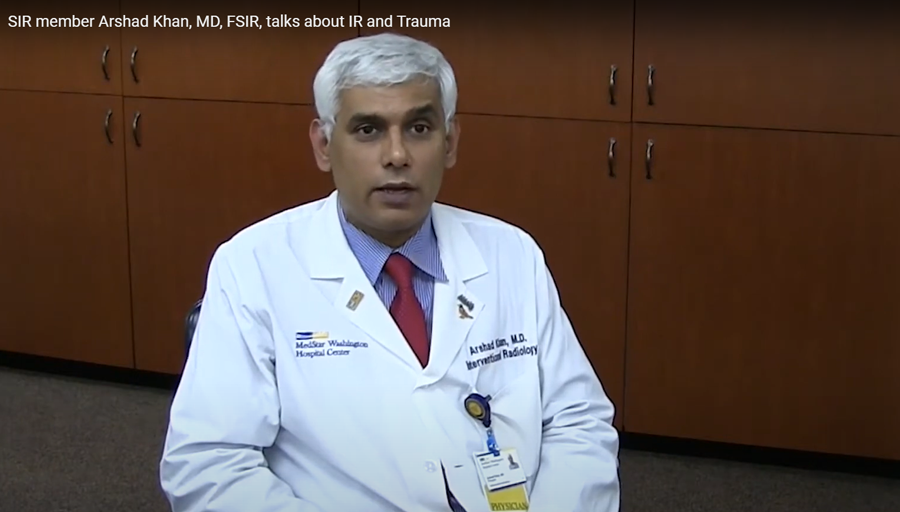Next-gen medicine
Unveiling compassion through innovation
Interventional radiology (IR) is a growing career pathway for medical students and residents who want to change the lives of the patients they serve.

Interventional radiology pairs advanced imaging with minimally invasive procedures allowing practitioners to offer better patient outcomes from vascular interventions to oncology treatments and beyond.
SIR member Oleksandra Kutsenko, MD, gives a TEDx Talk about the promise of IR.

As an interventional radiologist, you’ll be rewarded by seeing improved patient outcomes while partaking in an evolving field alongside medical visionaries. The Society of Interventional Radiology (SIR) is ready to guide and educate you throughout your career.
SIR member Arshad Khan, MD FSIR, explains IR’s critical role in trauma care.

We’ll help you stay up to date on residency requirements and provide peer networks to connect you with residents, fellows and students. Our members also have access to exclusive volunteer opportunities, grants and scholarships as well as SIR Connect: our private online platform just for IRs at every career stage.
SIR member Stephanie Kim, MD, describes a day in the life of an interventional radiologist.

Which IR residency route is right for you?
If you choose to become an IR, you’ll be in good company. There are 2,000+ SIR trainee members across the world who are considering or participating in these pathways:
Integrated IR residency: Medical students apply and match directly into an integrated IR residency. This is ideal if you’re confident in your desire to become an IR.
Independent IR residency: Medical students initially enter a diagnostic radiology (DR) residency and can then later apply and match into the independent IR residency.
Independent IR Residency with ESIR: Diagnostic radiology residents who complete ESIR training may be able to finish their independent IR residency program in one year.
